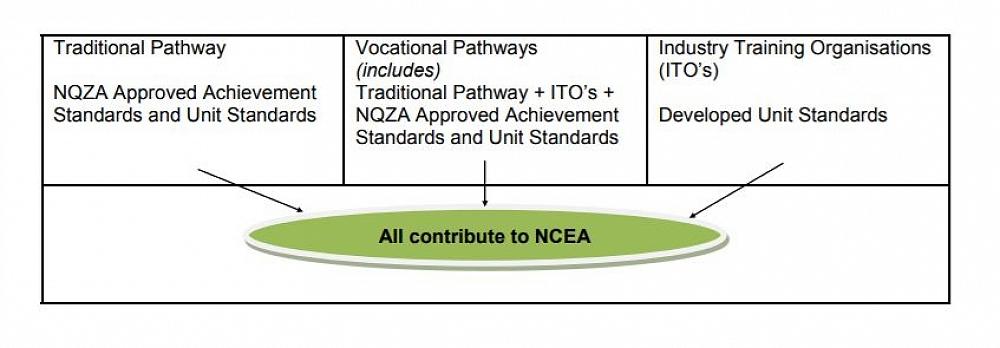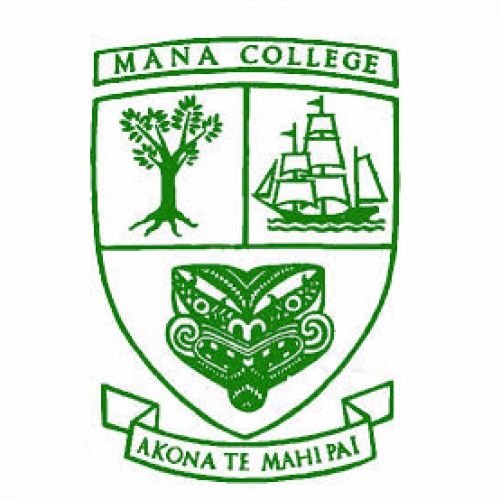
Vocational Pathways
Vocational Pathways can help you plan your journey from learning to earning. They provide new ways to achieve NCEA Levels 1, 2 and 3, and develop pathways that progress to further study, training and employment. Achieving NCEA Level 2 is the foundation for success in further education and prepares a student for the world of work. Achieving NCEA Level 2 with a Vocational Pathway demonstrates that you have some interest, knowledge and skills related to industry. It shows you have achieved the required number of credits to achieve NCEA Level 2, as well as achieved the required industry related credits that align with a particular industry.
Level 3 builds upon this through shared opportunities across school, tertiary and industry training.

Within each Vocational Pathway, there are recommended Achievement Standards and Unit Standards as well as
specific sector related Standards.
The pathways are flexible and enable you to change your direction as you are on your educational journey. You can
use the Vocational Pathways to plan your career and subject course options by using the colour coded pathways,
and easily see how your skills and interests relate to industry.
When deciding on a Vocational Pathway as your choice of study, ask yourself:

Vocational Pathways can lead to: (for example)
Construction and Infrastructure (CI) sector: Includes building anything from the ground up: garages to high rise towers, planning, designing, building, repairing and laying utilities for the community eg. drainage to dams, sewerage to broadband, roads, bridges, pavements, tunnels, ports, airway runways, electrical generation and supply, architect, engineer.
Creative Industries (CR) sector: Includes film/TV camera operator, film and video editor, graphics/web designer, lighting and stage designer, costume designer, media producer, musician, performing arts administrator, photographer, television presenter, stone masonry, Maori art (weaving, whakairo, taniko, raranga), curator, Pasifika art.
Primary Industries (PI) sector: Includes agriculture, horticulture, dairy manufacture, forestry, mining, seafood industry (fisheries), landscaping, equine industries, veterinary and animal care.
Service Industries (SI) sector: Includes hair and beauty industry, entertainment, fashion, hospitality, finance, media and news, museums and galleries, retail, sport and fitness, theatre and film, travel and tourism armed forces (air force, army, navy).
Social and Community Services (SC) sector: Includes public sector, education, healthcare (nursing) and medicine, community and social services, defence, emergency services, protection and security, Whānau Ora.
Manufacturing and Technology (MT) sector: In Manufacturing includes jewellery design to steel making, meat processing to managing people and production lines, mechanic, boat builder, butcher, clothing designer, engineer, welder, joiner. In Technology includes electronics, biotechnologist, designer, food technologist, telecommunications, technician, production technologist, medical technologist.
Where can I get more information on subjects/courses to take and job opportunities?
http://www.careers.govt.nz/tools/careerquest/
http://www.careers.govt.nz/tools/skill-matcher/

Requirements:
80 credits, of which:
A minimum of 60 credits at Level 2, of which 40 credits are from recommended sector Standards and 20 credits are sector specific Standards.
And the other 20 credits are from Level 1 or another Level; and
Includes literacy and numeracy credits at Level 1 or above.
Literacy requirement: A minimum of 10 credits through either:
The Literacy or Te Reo Matatini Co Requisites
Or via specified achievement standards available through a range of subjects and English for Academic Purposes
Numeracy requirement: A minimum of 10 credits through either:
The Numeracy or Pāngarau Co Requisites
Or via specified achievement standards available through a range of subjects and English for Academic Purposes
Choose your course:

